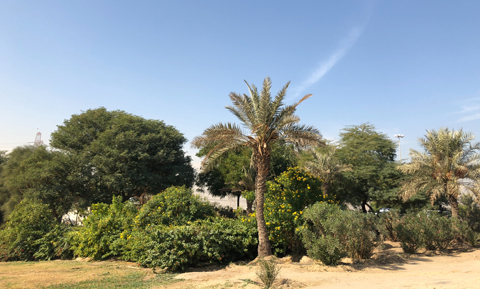 Dr. Sara Al-Ateeqi
Dr. Sara Al-AteeqiSometimes you pass by a truck with a large tree on its way to an incinerator, or some decades-old trees chopped and left next to a dumpster. These are sad scenes that may make you furious, wondering what was the fault of that tree that it was dealt with in such a violent manner. Perhaps the person who planted it was not sufficiently cognizant of the problems of planting it. Those who want to green their buildings or farms often look for weather-resistant characteristics so that the trees can survive in an arid desert climate such as Kuwait and to ensure their longevity.
This is what the vendors at the Fourth Ring Road nurseries told Kuwait Times. The most common questions they get from customers are whether the plant is suitable for external cultivation all year around, and whether it can tolerate the heat, cold and saline water. As a result, there's a huge demand for conocarpus trees, American cactus, lotus flower, Abraham's balm and oleander.
On the other hand, local authorities adopt the same approach to selecting plants that are grown in very large quantities in different parts of the country and in the desert, in order to make Kuwait greener. But we wonder whether there are studies demonstrating the long term effects of non-local plant cultivation in the ecosystem of Kuwait.
Kuwait's ecosystem and plants
In general, all plants in any desert macrocosm share the same characteristics that withstand heat and salinity. But the problem is that every plant has its natural enemy to sustain a balance in the environment. There is invariably a good reason why some plants and animals are not found in some geographical areas even if their climatic conditions are similar.
Every plant has its own soil type, bacteria and fungi. When non-native plants are cultivated in a habitat, this causes a disturbance in ecosystems, Dr Sara Al-Ateeqi, Director of Operations at Al-Shaheed Park Museums, told Kuwait Times.
"As a researcher, I do not focus overly much on what happens in cities, because ecosystems are fundamentally confused - people can plant whatever they want in their homes. But the damage is done when cultivating non-native plants in the heart of the desert and in large numbers, as has happened with the conocarpus. We later discovered that its long roots damage the infrastructure and break pipes," she said.
"The real imbalance occurs when the only goal is to turn the desert into a green land without prior research. I wonder why we are ashamed of our beautiful desert nature. There is a tone of dissatisfaction with its color and shape and efforts are made to try to turn it into something else, like a jungle, despite the existence of more than 400 species of fungi plants in the desert of Kuwait," Ateeqi added.
During winter and spring, the desert blooms with all sorts of plants. Therefore, it is best to invest in local plants and scrubs such as nitraria, matrimony vine, rhanterium and haloxylon, which are able to hold the soil, according to an academic study provided by Dr Ali Al-Dosari of the Kuwait Institute for Scientific Research. The study showed that it only takes us to cultivate these small bushes to reduce the degradation of soil and dust storms.
By Athoob Al-Shuaibi











